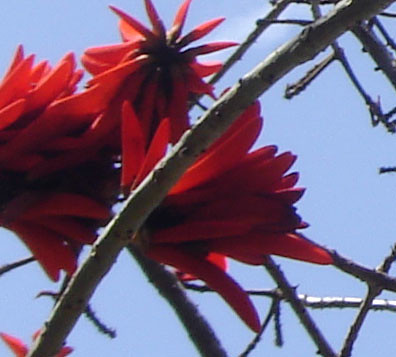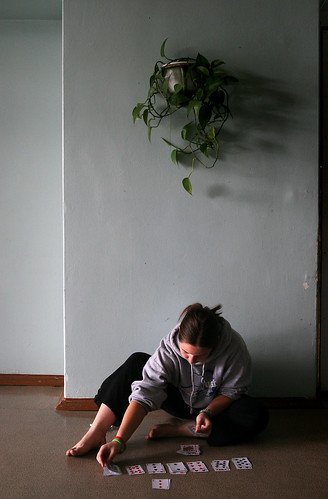Incarnations of Carnation: Exploring the Layers of a Flower
Carnation: A flower of fiery passion and at the same time there is something very common and unspecial about it. The scent of full-bodied carnatnion flowers always reminds me of summer, where all the plants are dead but there are a few graceful wild carnations weaving their way through the dead straw… And also of finely milled Maja soap, packaged in beautiful dark box decorated with red and shimmering-gold ornamental designs and one passionate flamenco dancer with detailed dress standing in the middle proudly waving her fan…
My grandfather brought this soap for my mother several times, and although it was mostly saved aside, tucked in among our clothes, I could swear my mom opened at least one bar of this fine soap in our outdoors shower, when we just arrived at that little village in the galilee… The shower was built outside of the little hut we resided on, until it will turn into a house… It was made of the cheapest lumber wood you could imagine (the one used to built crates – well, it was basically made of crates I guess). And with the water and soap this wood has become rather smooth and also fragrant… A sensory experience that concluded with drying up in the warm sun and wind… What can I tell you, I’ll give anything to have the opportunity to bathe outdoors again…
The flower-shop hybrid, with its many layered petals is resembles those of the majestic, graceful rose. However, they are rather scentless and take pride in their long shelf-life and their economic appeal more than anything else. Where I came from, carnations are almost always the flower of choice in flower arrangements decorating large wedding halls for a massive gathering of guests. Therefore it’s hard for me not to associate the fresh, slightly spicy and more green than sweet scent of flower-shop carnations with weddings…
The carnations that are used for perfumery, however, much like the wild carnations, are far more modest looking with only one tier of 5 petals. They are either pink or white in colour, and their edges are, as in all carnations, pinked – which is the true reason for their name “pinks” (in this case, the name has no connection to the colour). These small flowers are very fragrant, with the main constituent responsible for their sweet and spicy aroma being eugenol. The same spice present in high doses in clove buds, as well as in allspice berry.
The idea for a carnation soliflore was cooking in my head for a long time. In 2001, I have created a perfume called Altamira, the name chosen because of utter fondness of Steely Dan’s song and the concept was built on what I associated with these prehistoric caves in Spain where the first fresco were discovered. In a connotation that now seems to be everything but original, I have paired notes of carnation (chosen for the association of Spain, Flamenco and carnations) with sweet animalic base notes dominated by costus, which turned out fantastic even though a bit quirky and peculiar (costus will add peculiarity to any perfume with its animalic sensuality). Once I have discovered that costus should not be used on the skin, I had to neglect the idea of letting anyone but myself use my Altamira perfume. I have used carnation in several perfumes – a feminine version for l’Herbe Rouge (which was never really added to the collection; it was very similar to the l’Herbe Rouge you know, but with more carnation at the heart); and of course my first perfume, Ayala, which has a dominant clove and carnation note at the heart in addition to the other floral notes.
Once the Altamira perfume had to be neglected, I came up with the idea of the name InCarnatnion, for a soliflore perfume. It wasn’t until 2006 though that I have seriously started to flesh out the concept and think about it in the context of my soliflore collection – The Language of Flowers. This collection is a study of individual floral notes, some of which classic themes for soliflores (i.e.: rose, violet, lavender, and of course, carnation), and others are a bit more unusual (i.e.: osmanthus, magnolia, linden blossom…).
While the concept for The Language of Flowers is that of simplicity and minimalism, it is not to say that all of the perfumes are all that simple… Some notes require a complex backdrop for them to truly shine. And InCarnation is one of those scents, where the formula is complex and hides in it more than would be apparent to the unsuspecting nose… And when I have found a carnation absolute that I liked, it was time to start working… This carnation absolute from Egypt performed like a carnation blossom upon dilution – as if the alcohol opened its mysteriously spicy and green buds and allowed them to bloom fully.
For the first time, I’ve used the animal material called “Africa Stone Tincture”. The name is deceiving and confusing – while it does come from Africa, this is not really a stone. Rather, it is a nice perfumey name for the dropping of the rock hyrax, a relative of the elephant that releases large doses of pheromones into its droppings in order to communicate with other hyraxes. The scent is leathery and animalic (think both indolic and uric at once, and with that dry leathery undertone – hence it is most commonly described as a cross between civet and castoreum, which is a pretty good description if you ask me). Unlike the latter, hyraceum (AKA Africa stone tincture) was obtained by neither killing the animal nor torturing it – but rather by a meticulous and careful, albeit innocently odd and obsessive – collection of the animal droppings from nature without disturbing it from its peaceful life. While I can’t say I like hyraceum nearly as much as costus, it does add to InCarnation that animalic undertone I was hoping for – while fixing the floral notes quite nicely.
Other notes were chosen for their resemblance of aspects of the fresh carnation flower. Clove buds, allspice and tolu balsam for their eugenol content, of course; Carrot seed for its woody, green yet somewhat starchy and nutty presence; black pepper and nutmeg for an initial dry sharpness; tuberose, rose and ylang ylang to enhance the floralcy of carnation and its richness… And voila! I have created yet another InCarnation of this flower in my private olfactory memory…
I can’t say that I have replicated the fresh flower’s aroma; nor can I pretend that it reached any near previous carnation masterpieces (Bellodgia and Poivre by Caron being the most significant of all in my opinion)… But I’m happy with it and I have enjoyed tremendously the paths that lead me to create it.
InCarnation can be made in both parfum extrait $110 and crème parfum. The crème parfum is contained in Ayala Moriel’s signature pendant $150, collectible poison rings (price ranges) $55-$100), or the vintage pillbox with carnation print $130 (pictured below).

















